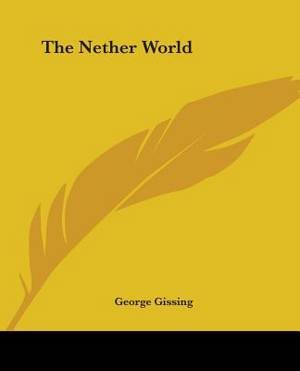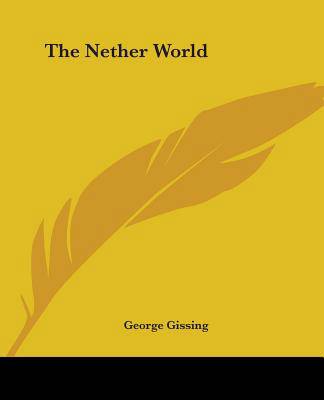
- Afhalen na 1 uur in een winkel met voorraad
- Gratis thuislevering in België vanaf € 30
- Ruim aanbod met 7 miljoen producten
- Afhalen na 1 uur in een winkel met voorraad
- Gratis thuislevering in België vanaf € 30
- Ruim aanbod met 7 miljoen producten
Zoeken
Omschrijving
The Nether World is a novel written by George Gissing, set in the impoverished district of Clerkenwell in London during the late 19th century. The novel explores the lives of the lower classes, including the working class and the destitute, and their struggles to survive in a society that is indifferent to their plight. The story follows the lives of several characters, including a young woman named Jane, who is forced to work as a seamstress to support her family, and a struggling writer named Sidney, who is trying to make a name for himself in the literary world. As the characters navigate their way through poverty, illness, and social injustice, they must also confront their own moral dilemmas and personal demons. The Nether World is a powerful and poignant portrayal of life in Victorian England, and a testament to the resilience of the human spirit in the face of adversity.In the social classification of the nether world -- a subject which so eminently adapts itself to the sportive and gracefully picturesque mode of treatment -- it will be convenient to distinguish broadly, and with reference to males alone, the two great sections of those who do, and those who do not, wear collars. Each of these orders would, it is obvious, offer much scope to an analyst delighting in subtle gradation. Taking the collarless, bow shrewdly might one discriminate between the many kinds of neckcloth which our climate renders necessary as a substitute for the nobler article of attire!This scarce antiquarian book is a facsimile reprint of the old original and may contain some imperfections such as library marks and notations. Because we believe this work is culturally important, we have made it available as part of our commitment for protecting, preserving, and promoting the world's literature in affordable, high quality, modern editions, that are true to their original work.
Specificaties
Betrokkenen
- Auteur(s):
- Uitgeverij:
Inhoud
- Aantal bladzijden:
- 416
- Taal:
- Engels
Eigenschappen
- Productcode (EAN):
- 9781419175404
- Verschijningsdatum:
- 17/06/2004
- Uitvoering:
- Paperback
- Formaat:
- Trade paperback (VS)
- Afmetingen:
- 202 mm x 223 mm
- Gewicht:
- 712 g

Alleen bij Standaard Boekhandel
+ 100 punten op je klantenkaart van Standaard Boekhandel
Beoordelingen
We publiceren alleen reviews die voldoen aan de voorwaarden voor reviews. Bekijk onze voorwaarden voor reviews.











